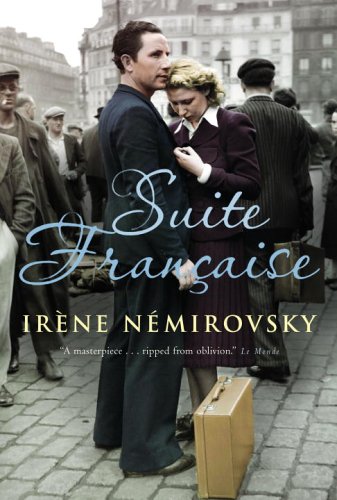Suite Française
Suite Française, an unfinished five-part epic that boldly illustrates the effect of the WWII German occupation on the ordinary people of France, really consists of three stories.
The first, “Storm in June,” portrays a handful of Parisians of different social classes (their characters intimately drawn) fleeing the city before the advancing German army. There’s lots of easy drama possible amid the horrors of a panicked mob, but this skilled author focuses on the intimate instead—the senseless struggle to maintain routines, and the small gestures of cruelty that are somehow more terrifying than bombs. The second story, “Dolce,” chronicles life in an occupied provincial village—with an sharp eye not only toward the simmering jealousies among town and farm people, aristocrats and bourgeoisie, but also on the nature of young women so long bereft of male company, and the tentative ease that grows between co-habitants, even if they are victor and vanquished. These are the only sections of the five-part project Irène Némirovsky completed, before the war touched home.
Thus, we have the third tale: Descended from a Russian Jewish family, Irène Némirovsky lived in France as a successful novelist when the Nazis invaded. In 1942, while writing this novel, she was arrested and sent to Auschwitz. Her Catholic husband tried to help her, but his efforts (achingly chronicled in an Appendix) led to his own execution. Their two young daughters went into hiding, dragging along a suitcase full of their mother’s papers. Decades later, one of the daughters opened that suitcase to discover Suite Française.
It’s a tragic story, all the more so because of the brilliance of the novel. Némirovsky was a master storyteller. Suite Française was her War and Peace: intimate, sharp-eyed, honest and compelling. It belongs on the shelf right next to The Diary of Anne Frank.










